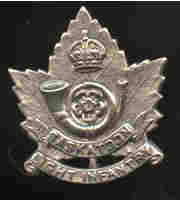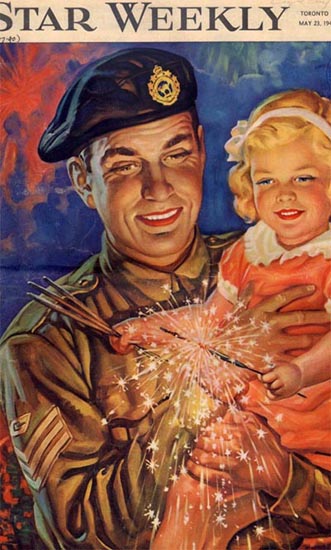|
1st Battalion
The Saskatoon Light Infantry
(M.G)
Its Story
This brief story of the Saskatoon Light
Infantry has necessarily excluded the many personal exploits of individual members. This is unfortunate as it is the small
personal stories which gives life to any unit. However, an attempt is made to provide a simple, popular account of the regiment.
ORIGIN
The origin of the Saskatoon Light Infantry (M.G.) can be traced to 1907 when the first infantry unit
was formed in the new Province of Saskatchewan. At that time, the 95th Saskatchewan Rifles was formed, with headquarters
in Regina and a company in Saskatoon. In April 1912, by this time Saskatoon had grown to a city with 12,000 people, the 95th
Saskatchewan Rifles was reorganized. From it was formed two regiments, the 95th with headquarters in Regina and the 105th
with headquarters in Saskatoon. Later in that year the title "Fusiliers" was given to the 105th Regiment. In 1914
the 105th Regiment Fusiliers became allied to the King's Own Yorkshire Light Infantry, the 2nd Battalion of that Regiment
having been formerly known as the 105th Madras Light Infantry. A further change in Regimental title was made in 1914 by incorporating
the civic name to become the 105th Regiment "Fusiliers" (Saskatoon).
During the Great War 1914-1918,
battalions were mobilized to form units having a numerical title. Initially, the 105th Regiment "Fusiliers" (Saskatoon)
made its largest contribution to the 11th Bn. C.E.F. This battalion in turn supplied a very great number of reinforcements
to the 5th Bn. C.E.F. Substantial numbers of the regiment were drafted to other infantry units of the C.E.F., particularly
the 65th and 96th Battalions which also mobilized in Saskatoon.
After the Great War, a reorganization took place
in 1919 with a view of preserving the traditions and identification the C.E.F. units. The North Saskatchewan Regiment was
formed which incorporated the 105th "Fusiliers" (Saskatoon) as the 1st Battalion and the 52nd Regiment as the 2nd
Battalion. The 1st Battalion perpetuated the 5th Battalion C.E.F. and the 2nd Bn. perpetuated the 53rd Bn. C.E.F.
In
1923 the North Saskatchewan Regiment became allied with the Duke of Wellington's Regiment (West Riding). This resulted in
the cancellation of the alliance of the 105th Regiment "Fusiliers" (Saskatoon) with the King's Own Yorkshire Light
Infantry.
A further reorganization of Saskatchewan Infantry took place in 1924. The 1st Battalion North Saskatchewan
Regiment assumed the title "Saskatoon Light Infantry" and the 2nd Battalion, North Saskatchewan Regiment assumed
the title " Prince Albert Volounteers". Two battalions of the Saskatoon Light Infantry were formed, the 1st Battalion
perpetuating the 5th Bn. C.E.F. and the 2nd (Reserve) Battalion perpetuating the 65th Bn. C.E.F. In June 1925 the Saskatoon
Light Infantry resumed its alliance with the King's own Yorkshire Light Infantry.

Saskatoon's Fighting Regiment - The Saskatoon Light Infantry
The Saskatoon Light Infantry (S.L.I.) originated as
the 95th Saskatchewan Rifles, and then in 1912 evolved into the 105th Saskatoon Fusiliers. In World War I, they supplied troops
to the 11th, 5th, 65th and 96th battalions. In 1919, the North Saskatchewan Regiment was formed as well as, the 1st battalion
(105th) and the 2nd battalion (52nd Regiment). In 1924, the 2nd battalion became the Prince Albert Volunteers at this time.
The S.L.I. resumed its alliance with the Kings Own Yorkshire Light Infantry. In 1936 S.L.I. became the S.L.I (M.G.) [a machine
gun regiment with headquarters and three companies in Saskatoon; C Company was in Melfort]. The S.L.I. took part in the Spitzbergen
operation August 1941 through Italy and North West Europe. They arrived home October 3, 1945.
[Source: A Resume
of the Story of 1st Battalion, the Saskatoon Light Infantry (MG) Canadian Army Overseas, compiled by Lt. Col. Drayton E. Walker.

|

